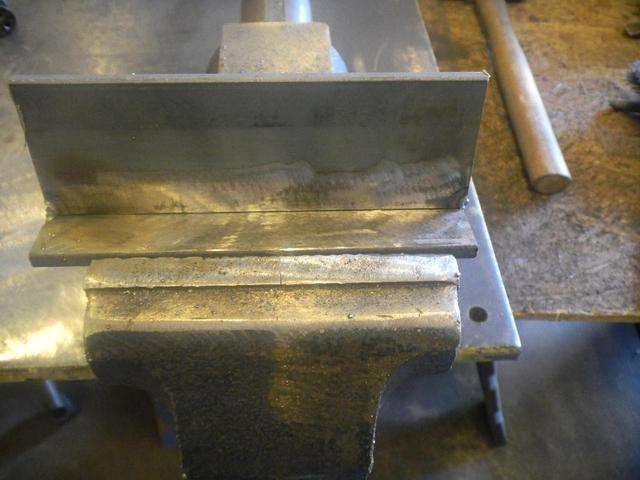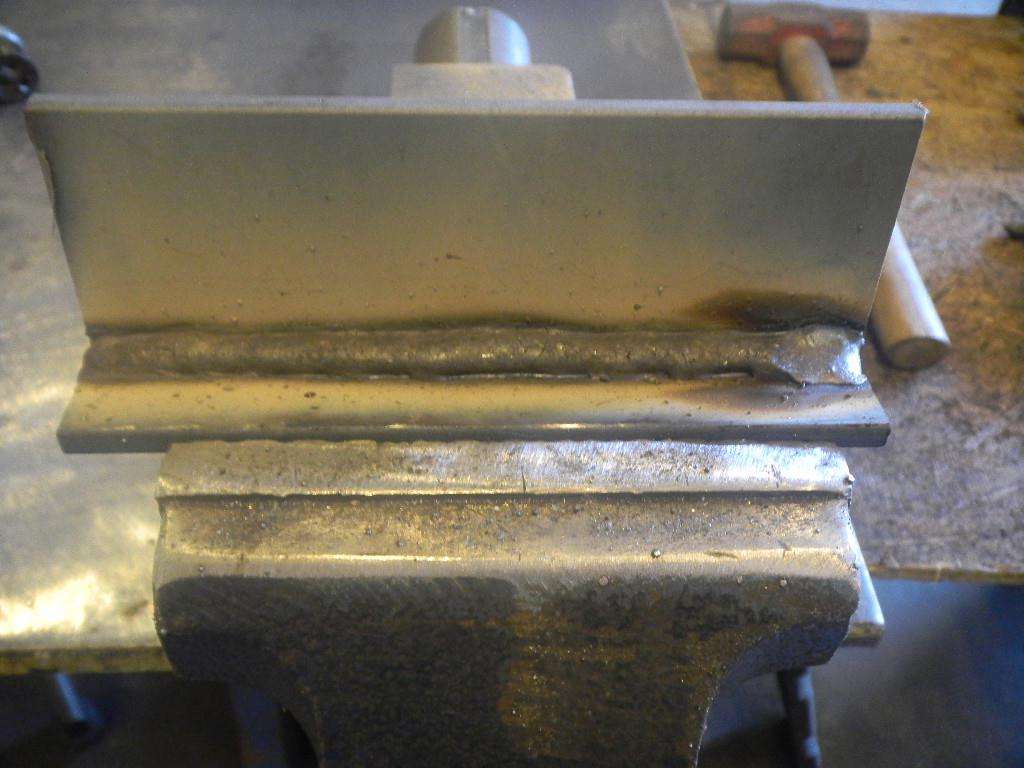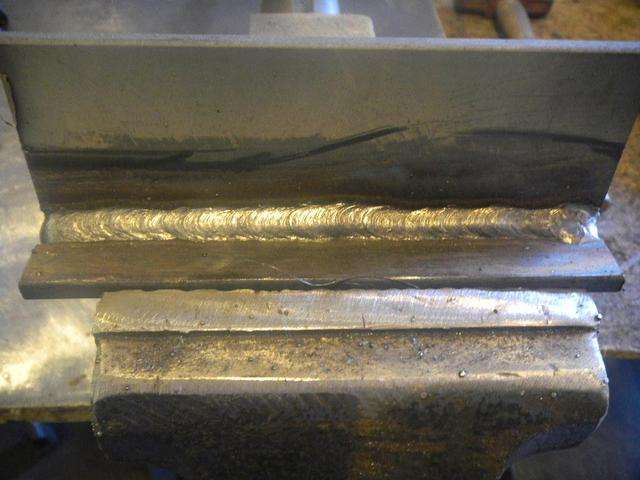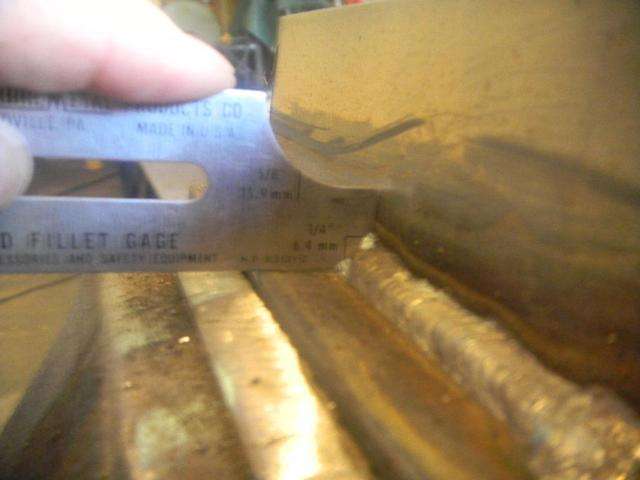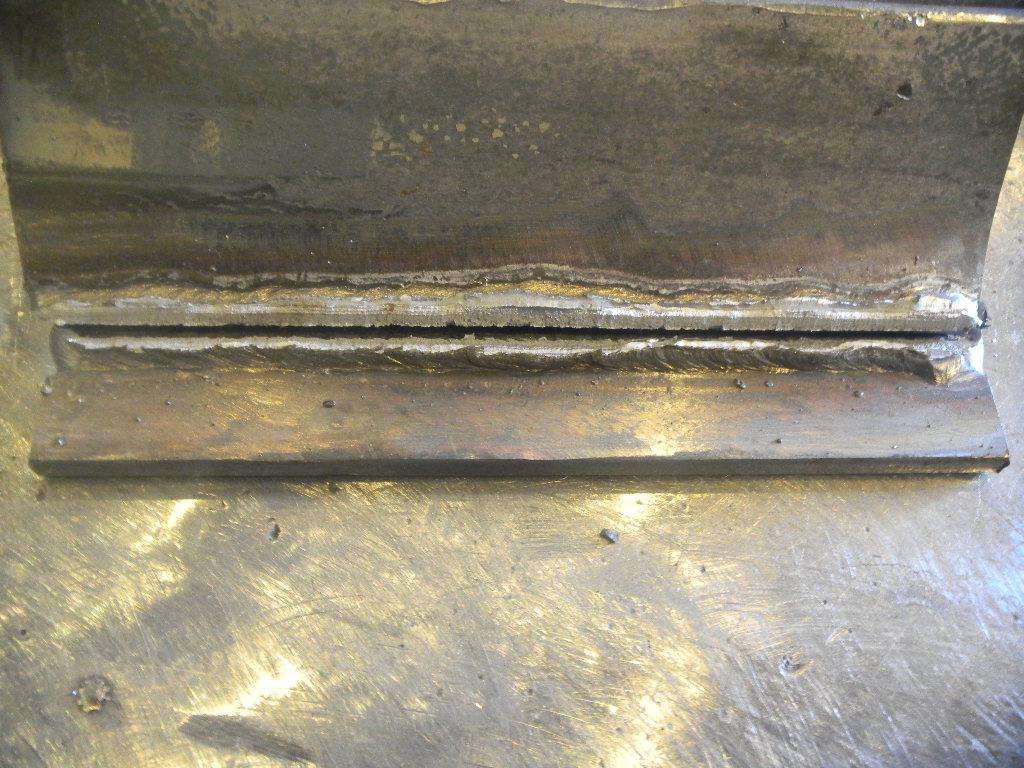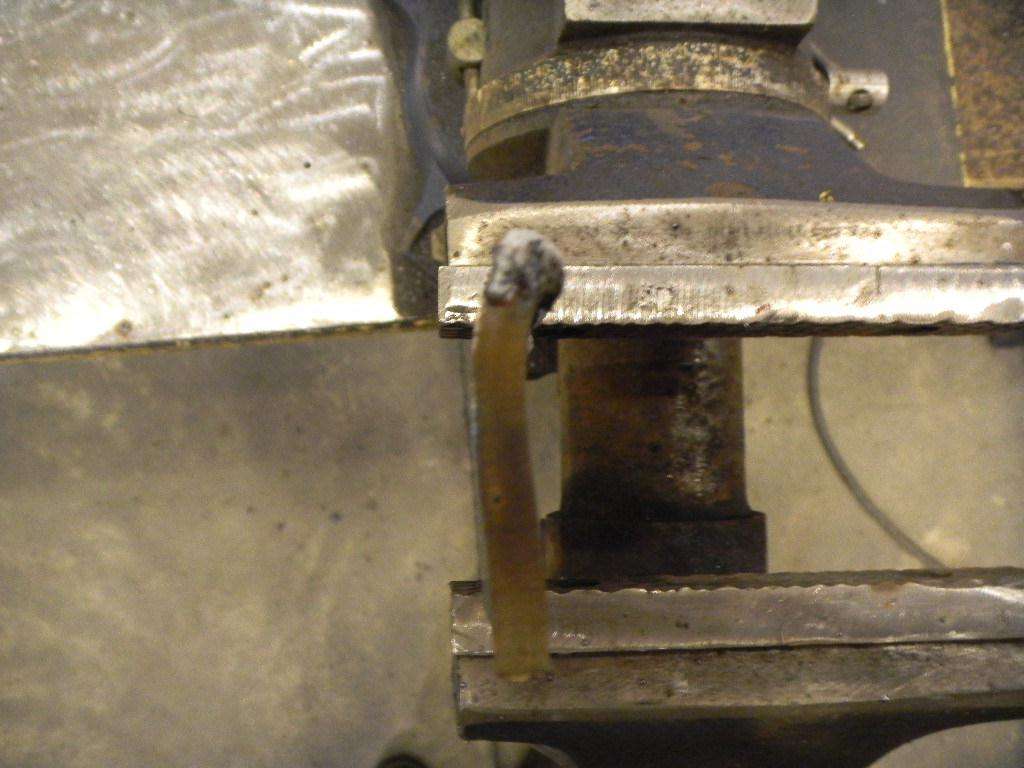You should upgrade or use an alternative browser.
- Thread starter Puddles
- Start date
trucker 40
Member
Maybe I can look for a while and see what I can find about this.
trucker 40
Member
http://weldingweb.com/archive/index.php/t-11222.html
trucker 40
Member
http://www.rittercnc.com/welding/7018-rods-question-9651-6.htm
Anyway, the 7018 makes a nice looking weld without the heavy flux gobs and pin holes I get with 6013... But, and it is a big but, the 7018 is hard to start the arc... A fresh stick usually starts with a couple of firm scratches before it gets going, but once you stop for a moment and go to restart the stick you can actually beat the tip of the stick hard against the steel 3 or 4 times before it will strike... One time I had to hit it so hard to get it going the stick shattered the flux and I had to go to a new stick.... And the 7018 is a noisy, sputtering arc very different from the 6013...
The 6013 starts like a dream... I can see the halo of current already reaching for the steel once the tip gets about 3/8" from it and then I get a nice quiet arc with no fuss...
Basically, I like the weld 7018 makes, but I don't like the way it welds... Any suggestions?
denny-o in Mich...
trucker 40
Member
Anonymous-0
Well-known Member
Anonymous-0
Well-known Member
Anonymous-0
Well-known Member
Anonymous-0
Well-known Member
Anonymous-0
Well-known Member
trucker 40
Member
I know Ive welded tons of 7018.Its just a long time ago.
I cant believe you are saying this stuff and went to all that welding school?
I am just having a discussion with Puddles and not trying to say his weld is bad,its just a little bit thinner than the plate he is welding.Im sure it would pass,and Im sure he was in a hurry and all,but if it was a little bit thicker I think it would have bent the plate at least and probably pulled the weld out of the steel.
Anonymous-0
Well-known Member
Anonymous-0
Well-known Member
trucker 40
Member
Anonymous-0
Well-known Member
What size of fillet welds would be required to achieve the same strength as the plate in the following examples.
A. 1/4" plate to 1/4" plate
B. 3/8" plate to 3/8" plate
C. 1/4" plate to 3/8" plate
D. 3/8" plate to 1/4" plate
E. 1/4" plate to 1/2" plate
F. 3/8" plate to 1/2" plate
G. 1/2" plate to 5/16" plate
I hope someone else doesn't post the answers first. Any welder would know the answers off the top of their head. Knowing this basic information would give you a better understanding of why Puddles weld wasn't skimpy by any means. Until you understand fillet welds, it's pointless trying to explain the purpose of a simple fillet weld test.
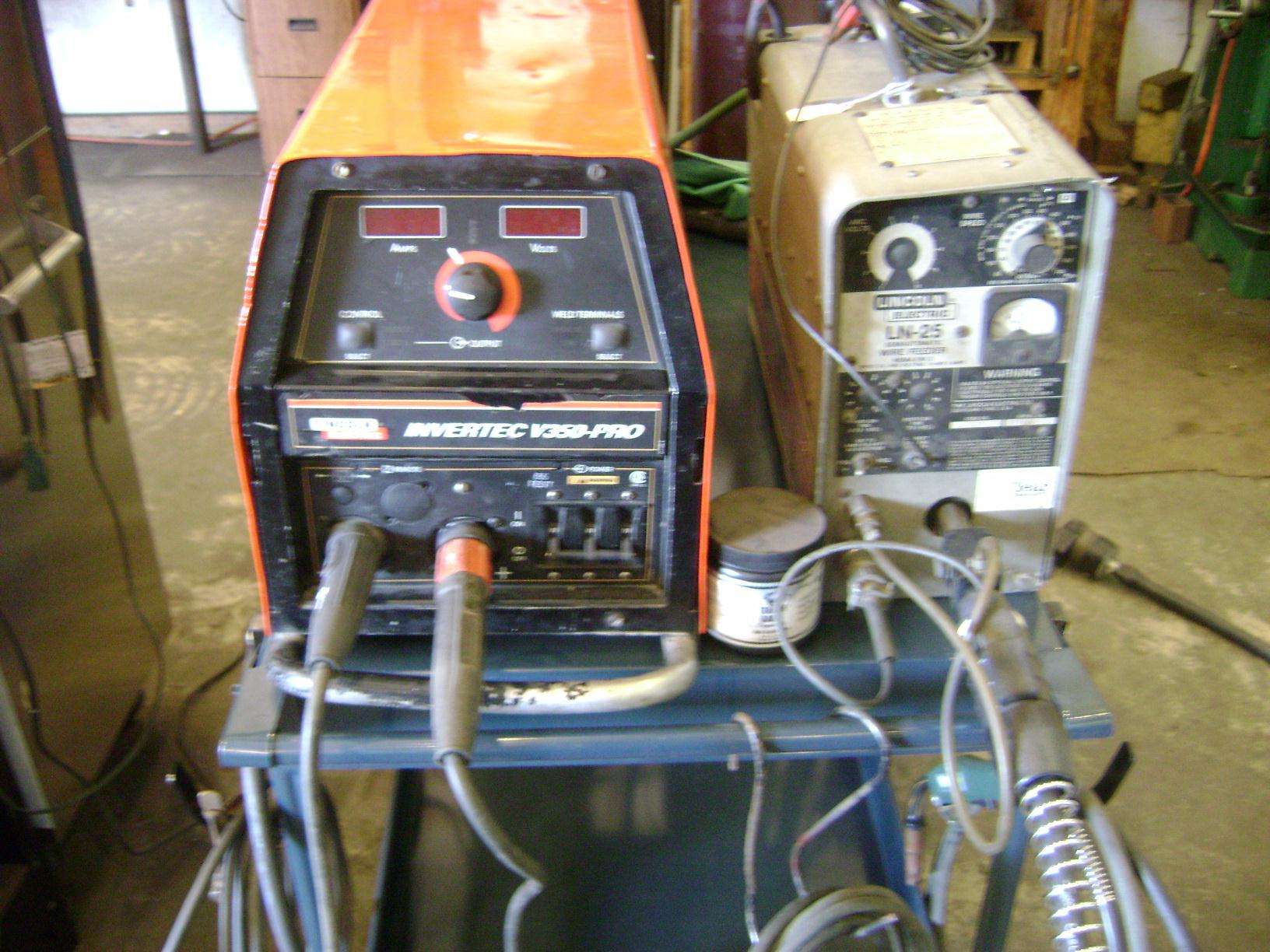
Trucker the top plate bent flat over the bottom plate, and the weld didn't break! I had to put both plates in the vice, and beat the top plate back the other direction to get the two plates to separate. That was the purpose of this picture. The plate on top in this picture is actually the base plate, note the heat line down the center. Look at the bottom plate, see how the mil scale is flaking? That's from the top plate being bent from impact.

Here's the picture of the two plates in the vice, before I broke the top plate off. Look close you can still see the weld intact! The top plate is in the jaws of the vice, note how it is bent from impact. If you ask me that was a very strong weld.
According to you it didn't pass. But I'll accept these results. :wink:
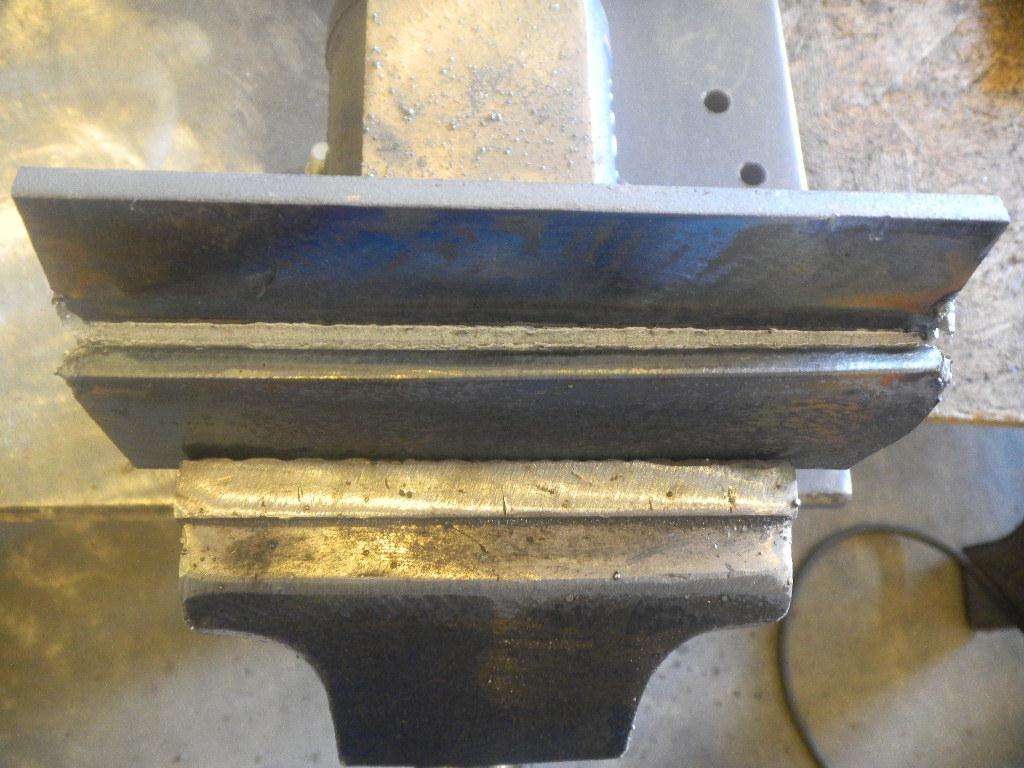
trucker 40
Member
Prove it! Post pictures of them.
"Trucker, you're embarrassing yourself" You're the one that is embarrassing themselves Dave.
You need to wipe off your nose! You have a lot of Puddles dirt on it with a little Lanse mixed in.
It sure is funny, whenever anyone dares to question Puddles or Lanse you jump all over them and berate them. Oh MY GOD how DARE you question Puddles?
Dave you embarrass yourself and look like a fool every time you jump to their defense. Their big boys let them defend themselves.
You portray yourself as a hot rod welder and spew advice and know how to every welding post on here. But you had to ask how to fix a broken backhoe that required welding. Dave you can talk the talk but you can't walk the walk.
You, Dave are the Cliff Clavin of this forum.
Sam give Cliff another beer.
Scott
Similar threads
- Replies
- 29
- Views
- 3K
We sell tractor parts! We have the parts you need to repair your tractor - the right parts. Our low prices and years of research make us your best choice when you need parts. Shop Online Today.
Copyright © 1997-2024 Yesterday's Tractor Co.
All Rights Reserved. Reproduction of any part of this website, including design and content, without written permission is strictly prohibited. Trade Marks and Trade Names contained and used in this Website are those of others, and are used in this Website in a descriptive sense to refer to the products of others. Use of this Web site constitutes acceptance of our User Agreement and Privacy Policy TRADEMARK DISCLAIMER: Tradenames and Trademarks referred to within Yesterday's Tractor Co. products and within the Yesterday's Tractor Co. websites are the property of their respective trademark holders. None of these trademark holders are affiliated with Yesterday's Tractor Co., our products, or our website nor are we sponsored by them. John Deere and its logos are the registered trademarks of the John Deere Corporation. Agco, Agco Allis, White, Massey Ferguson and their logos are the registered trademarks of AGCO Corporation. Case, Case-IH, Farmall, International Harvester, New Holland and their logos are registered trademarks of CNH Global N.V.
Yesterday's Tractors - Antique Tractor Headquarters
Website Accessibility Policy


